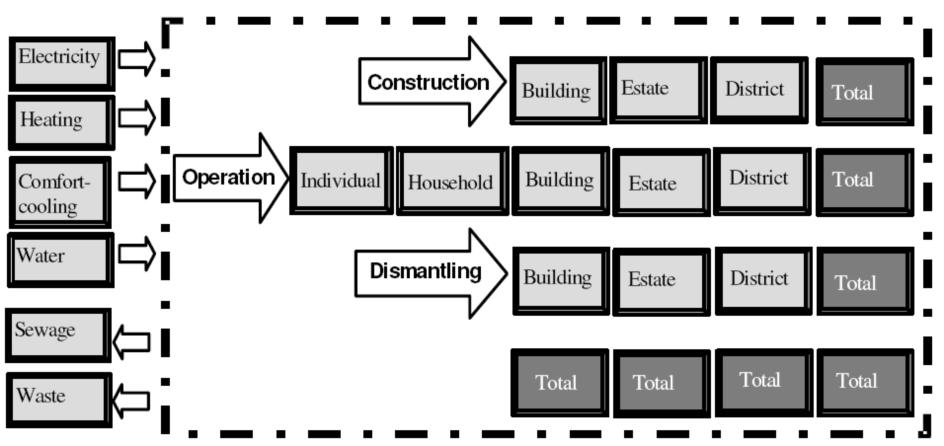
1 minute read
Figure 2.47 The Environmental Load Profi le
Figure 2.47 The Environmental Load Profi le
Source: Brick (2008). Note: Environmental loads are quantifi ed for different services and levels, and the results may be totaled to refl ect any combination of concerns.
Advertisement
The main strength of the ELP is that the tool is fl exible and dynamic, which makes it suitable for application both as a planning tool and as an evaluation tool. By factoring in variables, one may use the ELP to calculate the environmental loads that various planning decisions will generate at various project phases, including construction, use, demolition, and redevelopment (fi gure 2.47). It is also possible to test scenarios. For instance, one may compare the environmental performance of diff erent construction methods prior to making a decision on which method to use. Hence, it is possible for decision makers to include environmental concerns early in the process.
The ELP may also be used to evaluate the environmental performance of an existing city district or building based on the consumption of resources such as water and energy during the usage phase. The ELP enables analyses of environmental performance at multiple levels. The tool takes into account activities associated with individuals (for example, cooking and laundry); buildings (such as building materials, district heating, and electricity); the unbuilt real estate area (materials, working machines, and so on); and the common area (for instance, materials, personal transportation, and the transport of goods). By aggregating all factors, the environmental load of the whole city district may be analyzed. If each factor is analyzed separately, the various activities of the city may provide useful information for city planning.
The ELP enables comparisons among alternative designs, construction, and infrastructure. The ELP encompasses two life-cycle calculations:
• Eff ects from each of the life-cycle stages: construction, operation, and dismantling
• Eff ects from the life cycle of the building materials and electricity fl owing in and out of buildings and the city district
The ELP in the follow-up to Hammarby Sjöstad
In Stockholm’s Hammarby Sjöstad project, the city imposed tough environmental requirements on infrastructure solutions and technical installations in buildings. Since 2002, when the fi rst area, Sickla Udde, was completed, environmental goals and performance have been monitored using the ELP’s diff erent indicators. Figure 2.48 illustrates the results from four of the





